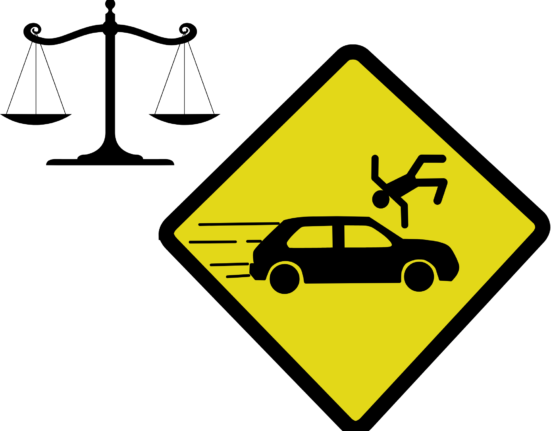This Article defines about culpable homicide and murder. All acts of murder are culpable homicide, but all acts of culpable homicides are not murder
INTRODUCTION
The word homicide has been derived from the Latin word ‘homo’ which means a man and ‘caedere’ which means to cut or kill. Thus, homicide means the killing of a human being. All cases of homicide are not culpable (punishable). Law distinguishes between lawful and unlawful homicide. For instances, killing in self-defense in pursuance of a lawful authority or by reason of mistake of fact is not culpable. Likewise, if death is caused by accident or misfortune or while doing an act in good faith and without any criminal intention for the benefit of the person killed, the man is excused from criminal responsibility for homicide.
Culpable Homicide is defined under section 299 of the Indian Penal Code, 1860. It consists of both physical and mental elements. Where an act is done with the intention of causing death or with such knowledge that the act which he/she is going to undertake will result in death of the person or would cause such bodily or physical injury that would lead to his death would satisfy both the physical and mental requirement.
Illustrations:
- Y is diagnosed with terminal illness and needs certain drugs to live from day to day. A confines him in a room and denies him his medication. As a result, Y dies. A is guilty of culpable homicide.
- G mows over a pedestrian deliberately. The pedestrian bleeds on the road and no one helps him and he dies as a result of G’s actions. G cannot take the defence that if the pedestrian had taken medical treatment at the right time, he would have lived.
- M knows S to be behind a bush. H does not know it. M, intending to cause, or knowing it to be likely to cause S’s death, induces H to fire at the bush. H fires and kills S. Here, H may be guilty of no offence but M has committed the offence of culpable homicide.
- X lays sticks and turf over a pit, with the intention of thereby causing death, or with the knowledge that death is likely to be thereby caused. A believing the ground to be firm, trends on it falls in and is killed. H has committed the offences of culpable homicide.
Ingredients of Culpable Homicide
1) Acts:
The act should be of such a nature that it would put to peril someone’s life or damage someone’s life to such an extent that the person would die. In most cases the act would involve a high degree of violence against the person. For instance, stabbing a person in vital organs, shooting someone at point blank range, or administering poison include instances which would constitute culpable homicide. The section says causing death by doing an act, so given the special circumstances certain acts which may not involve extreme degree of violence but may be sufficient to cause someone’s death. For example: starving someone may not require violence in the normal usage of the term, but may cause a person’s death.
2) Intention:
The act committed with the Intention of causing death. Thus where you push someone for a joke and the person falls on his head has a brain injury and dies, there was no intention of causing death but when you pushed the person deliberately with the idea that the person falls and dies, in that case the act is with the intention of causing death.
To prove intention in acts where there is bodily injury is likely to cause death. The act has to be can be of two types:
- Firstly, where bodily injury itself is done in a fashion which cause death. For example bludgeoning someone on the head repeatedly with a blunt instrument.
- Secondly, in situation where there are injuries and there are investigating events between the injuries and the death provided the delay is not so blatant, one needs to prove that injuries were administered with the intention of causing death.
3) Knowledge:
Knowledge is different from intention to the extent that where a person may not have the intention to commit an act which kills, he knows that the act which he commits will take someone’s life or is likely to take someone’s life will be considered having the knowledge that he is likely by such act to cause death.
Illustrations:
A doctor uses an infected syringe knowingly on a patient thereby infecting him with a terminal disease. The act by itself will not cause death, but the doctor has knowledge that his actions will lead to someone’s death.
Culpable Homicide amounting to Murder:
Section 300 deals with Culpable Homicide amounting to murder. In others words the section states that culpable homicide is murder in certain situations. This makes us come to two conclusions namely,
- For an act to be classified as murder it must first meet all the conditions of culpable homicide.
- All acts of murder are culpable homicide, but all acts of culpable homicides are not murder. Illustration: Akash shoots Priya with the intention of killing him. Priya dies in consequences. Akash commits Murder.
Culpable homicide is murder in four situations:
- When an act is done with the intention of causing death: ‘ The degree of intention required is very high for murder. There must be intention present and the intention must be to cause the death of the person, not only harm or grievous hurt without the intention to cause death. Instances would include:-
- Shooting someone at point blank range
- Stabbing someone in the hurt
- Hanging someone by the neck till he dies
- Strapping a bomb on someone
- Administering poison to someone
- Inflicting of bodily injury which the offender knows is likely to cause death: The second situation covers instances where the offender has special knowledge about the victim’s condition and causes harm in such a manner which causes death of the person. It states that the offender knows likely to be the cause of death.
- Bodily injury which causes death in the ordinary course of nature: These situations cover such acts where there is bodily injury which in ordinary sequence of events leads to the death of the person. The section actually has two conditions:
- The bodily injury inflicted is inflicted with the intention of causing death of the person on whom it is inflicted
- The bodily injury caused in the ordinary course of events leads to death of someone.
- Commission of an imminently dangerous act without any legitimate reason which would cause death or bodily injury which would cause death: This head covers the commission of those acts which are so imminently dangerous which when committed would cause death or bodily injury which would result in death of a person and that such an act is done without any lawful excuse.
- Commission of an inherently dangerous act
- The knowledge that the act in all probability will cause death or bodily injury which will cause death and
- The act is done without any excuse
Culpable Homicide not amounting to Murder:
As stated above an act must first become culpable homicide before it becomes murder. This part deals with instances in which culpable homicide not amounting to murder.
- Acts under grave and sudden provocation: When a person losses self-control on account of certain situation and causes the death of some person. The provocation must be grave, it must be sudden that is there must be no scope for pre meditation and thirdly, it must not be self-invited so as to use it as an excuse to deprive a person of his/ her life. Illustration : A returns from the office and sees his wife, B, in a compromising position with Z in his bedroom. A turn out of the room and kills Z next day. It is case of Murder and not Culpable because A had sufficient time to cool down his anger.
- When private Defense is exceeded in good faith: In exercising private defense either with respect to property or person, if person accidently exceeds his or her right in good faith or in wrong judgment and the act causes the death of a person, the act is culpable homicide and not murder. Illustration : Z attempts to horsewhip A, not in such a manner as to cause a grievous hurt to A. A draw out a pistol. Z persists in the assault. A believing in good faith that he can by no other means prevent himself from being horsewhipped shoots Z dead. A has not committed Murder, but only Culpable homicide.
- Exceeding the Ambit of discharging public duties: When an officer or public servant exceeds his or her mandate of duties or authority given to him or an officer or public servant assisting him exceeds the same, it is considered culpable homicide not amounting to murder.
- When death is caused in sudden fight or heat of passion upon a sudden quarrel: Culpable homicide is not murder if it is committed without premeditation in a sudden fight, in the heat of passion upon a sudden quarrel and without the offender’s having taken undue advantage or acted in a cruel or unusual manner.
- When death is caused of a person above eighteen years of age who voluntarily took the risk of death: When death is caused in a situation where a person has by his own consent put himself to risk the same would be culpable homicide and not murder. Illustration : A, by instigation, voluntarily causes Z, a person under eighteen years of age of commit suicide. Here, on account of Z’s youth, he was incapable of giving consent to his own death; A has therefore abetted murder.
Difference between Culpable Homicide and Murder
The true difference between culpable homicide and murder is only the difference in degrees of intention and knowledge. A greater the degree of intention and knowledge, the case would fall under murder. A lesser degree of intention or knowledge, the case would fall under culpable homicide. However, it is difficult to arrive at any categorical demarcations or strait jacket difference between culpable homicide and murder.
- Requirement of Intention:
Culpable Homicide requires that the offender should have the intention of causing such bodily injury as is likely to result in death. This means that so long as the person inflicting the injuries is doing so intentionally she/he has the requisite mental element. it is a question for the court to decide if the injuries inflicted on the victim were such that they were likely to result in death. The section does not specify a requirement that the person should that these injuries are such they will result in the death of the person on whom they are inflicted.
Culpable Homicide is murder if a person intentionally causes some bodily injury to a person, and the bodily injury such that it is sufficient in the ordinary course of nature to cause death.
- Requirement of knowledge:
Culpable Homicide requires that the offender have the knowledge that the act committed by her/ him is such that it is likely to result in death. On the other hand, Murder requires that the person committing the act have the knowledge that the act committed is so imminently dangerous that it must in all probability cause death.
The position of law related to Culpable Homicide and murder and punishment for the same in other countries like USA, Canada, Australia, China, Australian, Singapore, and South Africa.
In Kesar Singh v. State of Haryana the Court held that the distinction between knowledge and intention. Knowledge in the context of Section 299 would, inter alia, mean consciousness or realisation or understanding. The distinction between the terms “knowledge” and “intention” again is a difference of degrees. An inference of knowledge that it is likely to cause death must be arrived at keeping in view the fact situation obtaining in each case. The accused must be aware of the consequences of his act.
Knowledge denotes a bare state of conscious awareness of certain facts in which the human mind might itself remain supine or inactive whereas intention connotes a conscious state in which mental faculties are roused into activity and summed up into action for the deliberate purpose of being directed towards a particular and specific end which the human mind conceives and perceives before itself.
In Rampal Singh v. State of U.P the Court held that Sections 299 and 300 of the Code deal with the definition of “culpable homicide” and “murder”, respectively. In terms of Section 299, “culpable homicide” is described as an act of causing death: (i) with the intention of causing death, or (ii) with the intention of causing such bodily injury as is likely to cause death, or (iii) with the knowledge that such an act is likely to cause death.
As is clear from a reading of this provision, the former part of it, emphasizes on the expression “intention” while the latter upon “knowledge”. Both these are positive mental attitudes, however, of different degrees. The mental element in “culpable homicide”, that is, the mental attitude towards the consequences of conduct is one of intention and knowledge. Once an offence is caused in any of the three stated manners noted above, it would be “culpable homicide”. Section 300, however, deals with “murder” although there is no clear definition of “murder” in Section 300 of the Code. As has been repeatedly held by this Court, “culpable homicide” is the genus and “murder” is its species and all “murders” are “culpable homicides” but all “culpable homicides” are not “murders”.
To conclude, the difference between culpable homicide and murder can be broadly specified as follows:
- The aspect of degree of probability of death or it can be said as the seriousness of act of the crime. If the act done by the offender is either a heinous crime or it be a very dangerous act that causes only death to a person, without any other result it would aptly fall under the concept if Murder and not Culpable homicide.
- If such an act by the offender leaves the victim to be alive with some grievous hurt with chance of escaping death, then it is said to be a Culpable homicide which does not amount to murder
- Every murder is committed after committing a culpable homicide but every culpable homicide does not amount to Murder. Murder is said to be an aggravated form of a Culpable homicide.
- The existence of one of the ingredient of Section 300 of IPC turns the crime into a murder where the exceptions to murder turns the crime into a Culpable homicide which does not amount to Murder.
- In both the concepts there is intention which is mens rea involved, to kill a person. But whereas in Certain case the offender will not be certain in death of the victim, in that case the offence done by the offender is a culpable homicide but when the offender has certainty in his act will surely cause death of the victim and this will fit into the definition of murder. Because the degree of probability of death is high in murder whereas in Culpable homicide the degree of death is low.
![]()






Leave feedback about this